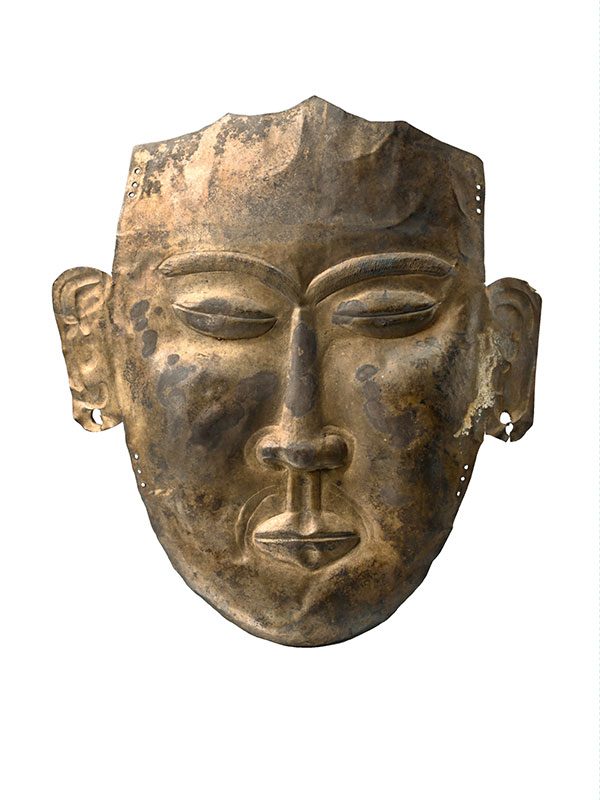Silver gilt funerary mask
China, Liao dynasty, 10th or 11th century
A silver funerary mask depicting a human face, worked in repoussé technique with strong, naturalistically portrayed features and a demure expression. The heavy-lidded eyes are shut and set below pronounced, arched eyebrows that are engraved with finely hatched lines. The face has high cheekbones and a straight, broad nose set above a full-lipped, well-defined mouth. The finely detailed, prominent ears jut out to either side of the head. The earlobes are pierced for ear ornaments. The top of the mask is cut into undulating peaks. On the sides of the face are four sets of three small holes. The mask bears extensive traces of the original gilding.
Masks such as the present example are thought to be the products of shamanistic religious beliefs, and are said to accurately reflect the facial features, age and sex of the interred. The row of tiny holes around the edge of the mask indicates that it was once attached to a wire mesh, which encased the entire body of the deceased, including the head. This funerary practice is specifically associated with the Qidan, a semi-nomadic tribe of hunters and pastoral people, who founded the Liao dynasty that governed northern China from 907 – 1125. The material used for the funerary mask was determined by the status of the wearer; copper was used for those of low rank, high-ranking officials were allowed to have silver and silver gilt masks, and gold was reserved for members of the imperial family.[1] A gilt-copper mask with similar features is in the Meiyintang Collection.[2]
- Shen, Hsueh-man (ed.) Gilded Splendor, Treasures of China’s Liao Empire (907 – 1125), Asia Society New York, 2006, p. 100
- Krahl, R. Chinese Ceramics from the Meiyintang Collection Volume One, Azimuth Editions, London 1994, fig. 31, p. 107

